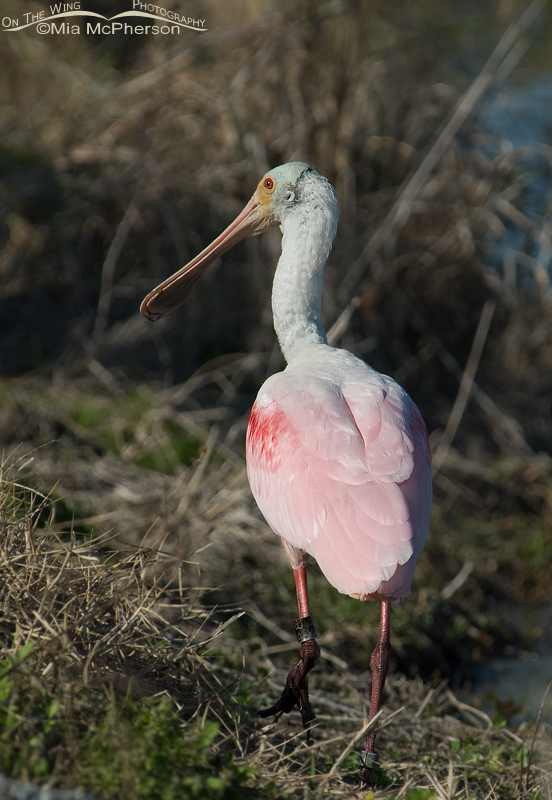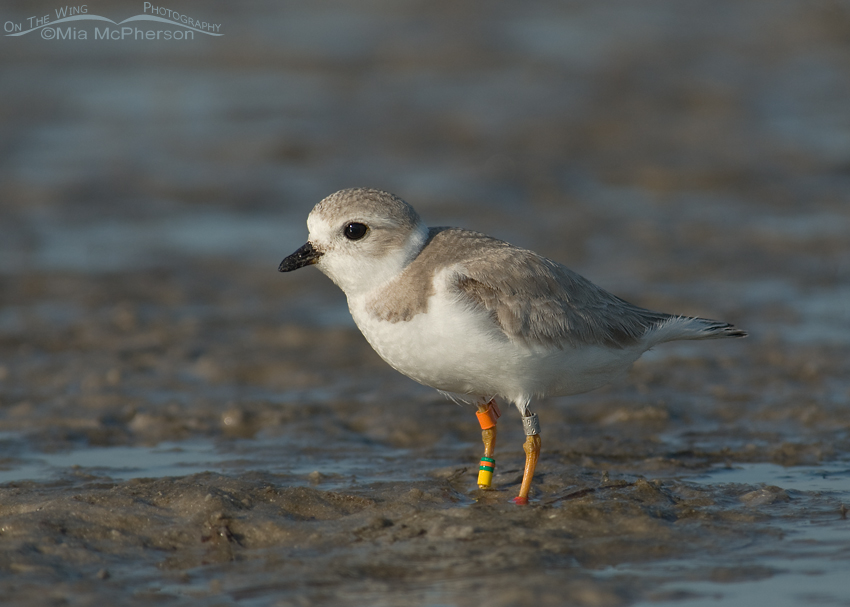As a bird photographer it can some times be disheartening when you have great light, a wonderful setting and a beautiful specimen of a bird in front of your lens when you see the “jewelry” (bands) that some birds will be wearing.
However; those bands can supply information about that individual bird that may help its species survive. Whenever I see and can photograph a banded bird I do my part and send the information on the re-sighting in. At the end of the post I will provide some links for resightings.
 Banded Red Knot, Fort De Soto County Park, Pinellas County, Florida – D200, handheld, f6.3, 1/1500, ISO 400, 80-400mm VR at 400mm, natural light
Banded Red Knot, Fort De Soto County Park, Pinellas County, Florida – D200, handheld, f6.3, 1/1500, ISO 400, 80-400mm VR at 400mm, natural light
Red Knots have been a species of special interest for me since I first saw one while living in Florida. I would see banded Red Knots on the beaches of the Gulf of Mexico and because of the bands I began to do research about the species and soon found myself reporting all the banded Red Knots I saw and photographed there hoping that my small contribution of information to researchers might help these beautiful shorebirds.
Red Knots are a long distance migratory species. They winter in Chile and Argentina then fly 9,000 miles to the Canadian Arctic Circle to breed. On the way north Red Knots feed upon the eggs of the Horseshoe Crabs, fattening up for the long journey and to acquire fat reserves in case food is not plentiful on the breeding grounds. They need those fat reserves to raise their young and so they can begin to make the long journey back to South America.
Horseshoe crabs have been harvested for their blood which can make a medical dye, for their shells which are used for fertilizer and they are also used for bait in eel pots. The medical dyes can be synthetically produced as can the fertilizer.
Due to dramatic declines in Red Knot populations there are ongoing research studies for this species. Re-sighting information may help Red Knots to survive. I once photographed and reported a banded Red Knot and later found out that the bird was over 12 years old, a remarkable find.
The red knot in the image above was banded on Anna Maria Island in Florida on 2/28/09, my resighting was on 3/20/09 about an hour north of where it had been originally banded.
 Banded Roseate Spoonbill – D200, f6.3, 1/800, ISO 200, 80-400mm VR at 400mm, natural light
Banded Roseate Spoonbill – D200, f6.3, 1/800, ISO 200, 80-400mm VR at 400mm, natural light
This Roseate Spoonbill was photographed at a wetlands near where I lived in Florida. The bird was banded on Pigeon Key just north of Marathon Florida which is on the way to Key West. My resighting was about 250 miles north and west of where the bird was banded as a chick on 12/23/05. It was an interesting resighting according to the local Audubon Chapter, I reported the bird to them because I had read where they were specifically interested in banded Spoonbill resightings at the time.
 Banded Piping Plover – D200, f6.3, 1/1000, ISO 200, 80-400mm VR at 400mm, natural light
Banded Piping Plover – D200, f6.3, 1/1000, ISO 200, 80-400mm VR at 400mm, natural light
I reported my resighting of the Piping Plover in the image above but seem to have lost the information on this bird that was sent back to me during my move from Florida to Utah. It is not uncommon to see banded Piping Plovers along the coast of Florida. There are several research projects going on up North to help understand this imperiled species better.
Yes, I used to complain about the bands I would see when I photographed birds but now I am more than willing to do my part and send in my resightings for these research studies.
Reporting Encounter of Marked Bird – General
Mia

